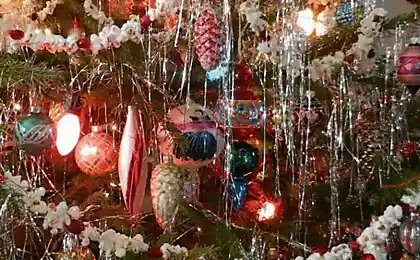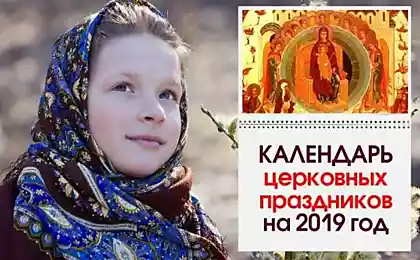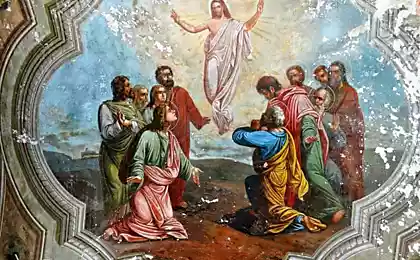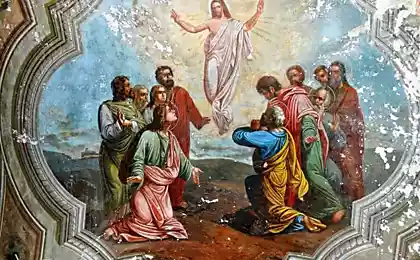332
How to recognize valuable Christmas toys
For many people originally from the USSR, a dusty box with Christmas tree decorations, stored on mezzanine, to this day serves as one of the symbols of childhood, celebration and magic.

Bright icicles, cones, a figure of the Snow Maiden, Santa Claus, glass stars and astronauts on a pinch ... All these forgotten treasures have not only nostalgic, but also real value for collectors and antiquarians.

Sometimes a lot. If you still have your grandmother at home Christmas-jewelry In the last century, you may be a millionaire without five minutes.
Old Christmas toys These days quite often there are ads like "Buy us". Christmas toys of the USSR? Prices range from tens to hundreds and even thousands of dollars.

How much do Christmas toys of the USSR actually cost and how to distinguish valuable from useless? Advice "Site" will help at least approximately estimate the cost of rare jewelry.
In 1927, the Christmas tree was banned in the USSR as a relic of the dark past, a bourgeois and priestly custom.
Of course, many parents secretly, behind closed curtains, set up a Christmas tree for their children and organized a holiday, but the production of Christmas decorations stopped.
This continued until December 28, 1935, when the newspaper Pravda published a letter from the First Secretary of the Kiev Regional Committee of the CPSU (Bolshevik) Pavel Postyshev with the words: “Let’s organize a fun New Year’s meeting for children, let’s arrange a good Soviet Christmas tree in all cities and collective farms!”
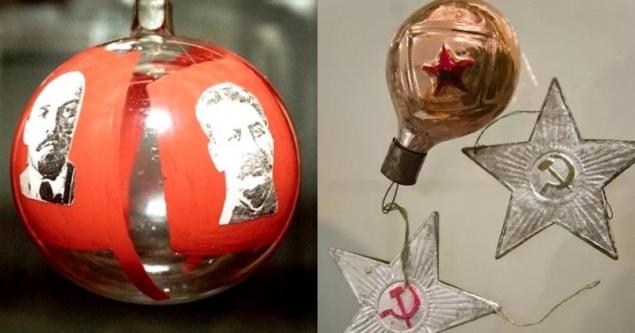
The initiative, most likely, came from the very top, so 3 days before the New Year in a hurry began to make Christmas decorations from improvised materials and organize New Year's matinees.
So the tree from the attribute of the Christmas holiday and Christmas became an attribute of the Soviet New Year ritual. At the same time, angels, bells and the Star of Bethlehem were replaced by ideologically correct pioneers, Red Army men and a five-pointed Kremlin star as the top.
In the 1930s, toys with proletarian symbols, portraits of members of the Politburo, Lenin, Stalin, Marx and Engels were produced.

In Christmas decorations, as in a mirror, reflected the history of the country and its achievements. On the festive Christmas trees appeared airships, polar explorers, planes, paratroopers and border guards.
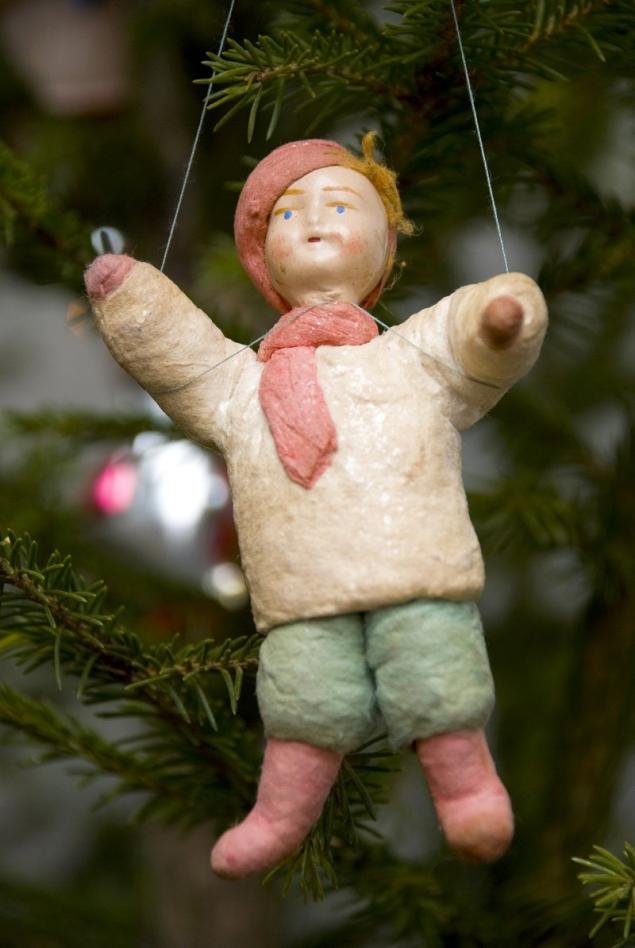
Glass toys were quite expensive and fragile, so up to the 50s toys were made of painted cardboard and pressed wool.
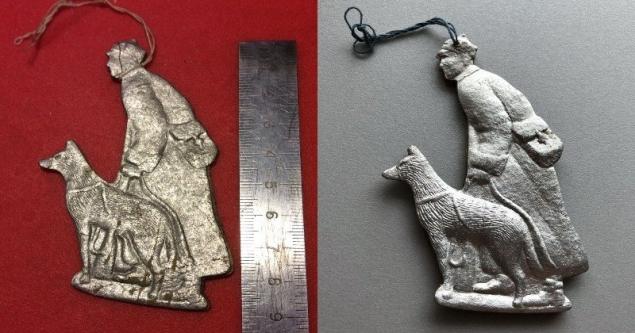
One of these toys is the border guard Karatsup with the dog Ingus (1936). Until now, only a few copies have been preserved in good condition. At auctions, the price per unit reaches 100-150 thousand rubles!
In the postwar period, toys become brighter and more diverse. There are figures of fairy-tale characters, toys depicting household items: samovars, kettles, lamps, as well as products made of wire and glass.
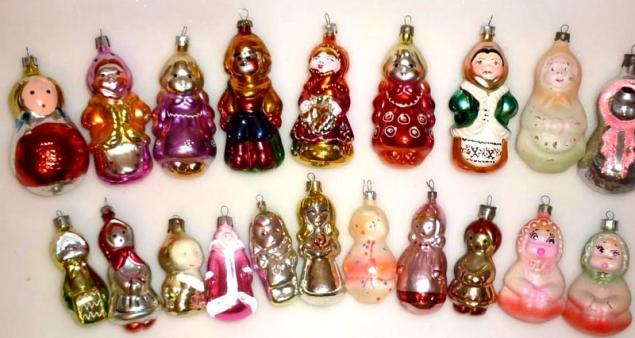
In 1949, in honor of the 150th anniversary of the birth of Alexander Sergeyevich Pushkin, a whole series of Christmas toys depicting the heroes of Pushkin's fairy tales was released.

After 1960, rockets, stars and satellites became popular Christmas toys.
Because of the rarity, pre-war toys are highly valued, which can be considered antique. Little has survived from this historical period – much has been burned or lost.
This increases the value of cotton and cardboard toys, which are very difficult to find in good quality today. The faces of Christmas dolls were made of ceramics and painted by hand.
“If you see a toy from the 1940s looking at you with an almost lively face, it’s probably valuable,” says writer and toy collector Lada Luzina.
Popular among collectors full series of toys, toys dedicated to memorable dates and real historical personalities.
After 1966, the production of Soviet Christmas toys became in-line. Their quality has passed into quantity, which means that later products in their mass are no longer of collectible interest.
It is up to you to sell or not to sell old Christmas toys. For many of us, this is primarily a memory, a family heirloom, with which history comes to life on the New Year’s tree every year.

Bright icicles, cones, a figure of the Snow Maiden, Santa Claus, glass stars and astronauts on a pinch ... All these forgotten treasures have not only nostalgic, but also real value for collectors and antiquarians.

Sometimes a lot. If you still have your grandmother at home Christmas-jewelry In the last century, you may be a millionaire without five minutes.
Old Christmas toys These days quite often there are ads like "Buy us". Christmas toys of the USSR? Prices range from tens to hundreds and even thousands of dollars.

How much do Christmas toys of the USSR actually cost and how to distinguish valuable from useless? Advice "Site" will help at least approximately estimate the cost of rare jewelry.
In 1927, the Christmas tree was banned in the USSR as a relic of the dark past, a bourgeois and priestly custom.
Of course, many parents secretly, behind closed curtains, set up a Christmas tree for their children and organized a holiday, but the production of Christmas decorations stopped.
This continued until December 28, 1935, when the newspaper Pravda published a letter from the First Secretary of the Kiev Regional Committee of the CPSU (Bolshevik) Pavel Postyshev with the words: “Let’s organize a fun New Year’s meeting for children, let’s arrange a good Soviet Christmas tree in all cities and collective farms!”

The initiative, most likely, came from the very top, so 3 days before the New Year in a hurry began to make Christmas decorations from improvised materials and organize New Year's matinees.
So the tree from the attribute of the Christmas holiday and Christmas became an attribute of the Soviet New Year ritual. At the same time, angels, bells and the Star of Bethlehem were replaced by ideologically correct pioneers, Red Army men and a five-pointed Kremlin star as the top.
In the 1930s, toys with proletarian symbols, portraits of members of the Politburo, Lenin, Stalin, Marx and Engels were produced.

In Christmas decorations, as in a mirror, reflected the history of the country and its achievements. On the festive Christmas trees appeared airships, polar explorers, planes, paratroopers and border guards.

Glass toys were quite expensive and fragile, so up to the 50s toys were made of painted cardboard and pressed wool.

One of these toys is the border guard Karatsup with the dog Ingus (1936). Until now, only a few copies have been preserved in good condition. At auctions, the price per unit reaches 100-150 thousand rubles!
In the postwar period, toys become brighter and more diverse. There are figures of fairy-tale characters, toys depicting household items: samovars, kettles, lamps, as well as products made of wire and glass.

In 1949, in honor of the 150th anniversary of the birth of Alexander Sergeyevich Pushkin, a whole series of Christmas toys depicting the heroes of Pushkin's fairy tales was released.

After 1960, rockets, stars and satellites became popular Christmas toys.
Because of the rarity, pre-war toys are highly valued, which can be considered antique. Little has survived from this historical period – much has been burned or lost.
This increases the value of cotton and cardboard toys, which are very difficult to find in good quality today. The faces of Christmas dolls were made of ceramics and painted by hand.
“If you see a toy from the 1940s looking at you with an almost lively face, it’s probably valuable,” says writer and toy collector Lada Luzina.
Popular among collectors full series of toys, toys dedicated to memorable dates and real historical personalities.
After 1966, the production of Soviet Christmas toys became in-line. Their quality has passed into quantity, which means that later products in their mass are no longer of collectible interest.
- Thumbelina on a swallow (wool, papier-mache, early twentieth century) - 32 500 rubles.

- Set "15 republics of the USSR" in a box (vata, 1962) - 65 000 rubles.

- Set "Doctor Aibolit" (glass, 1950s) - 150 000 rubles.

- Mizgir from the set "Snow Maiden" (glass, 1950s) - 20,000 rubles.

- Circus piglet with a pipe (glass, 1950s) - 2000 rubles.

- A cog from Nosov’s fairy tale “The Adventures of Neznaika and His Friends” (glass, pinch, 14 cm) was sold at auction for $ 862.

- Baron Orange from the series "Cipollino" (glass, the only one in the series was produced without a pinch) - was sold at auction for $ 397.

It is up to you to sell or not to sell old Christmas toys. For many of us, this is primarily a memory, a family heirloom, with which history comes to life on the New Year’s tree every year.










